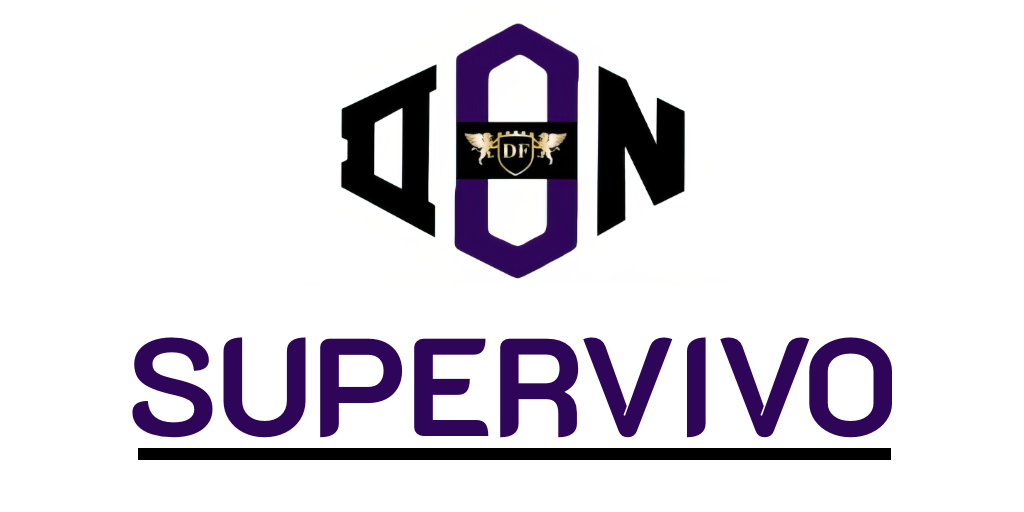In today’s rapidly evolving digital landscape, the relevance of your organisation’s IT model can significantly influence team productivity and business performance. Many businesses find themselves grappling with outdated IT models that hinder IT efficiency and limit their potential for success. It’s crucial to assess whether these systems are holding back your team, especially when modern IT solutions offer pathways to revitalising your business operations. By embracing contemporary technology, organisations can unlock the benefits of improved productivity and maintain a competitive edge in their industry.
Understanding Outdated IT Models
The landscape of business technology has undergone significant changes over the years. Recognising the definition of outdated IT models is essential in understanding how to navigate this evolving environment. Outdated IT models encompass systems, processes, and infrastructures that fail to meet the demands of modern enterprises. These models are often characterised by their inability to support new capabilities and technological advancements.
Definition of Outdated IT Models
Outdated IT models typically lack the features necessary for operational efficiency and flexibility. As businesses strive for innovation and growth, reliance on these outdated frameworks hinders performance. Companies must remain aware of the definition of outdated IT models to ensure their technology infrastructure aligns with contemporary standards.
How They Evolved Over Time
The evolution of IT systems has brought forth remarkable innovations that have transformed the way organisations operate. Technologies such as cloud computing, mobility solutions, and advanced data analytics illustrate how quickly business technology can advance. Businesses that cling to older models risk falling behind competitors who leverage the latest technological advances.
Understanding these transitions in technology allows companies to appreciate the importance of re-evaluating their IT strategies. Embracing the evolution of IT systems can empower teams, streamline operations, and ultimately drive growth.
Are outdated IT models slowing your team down?
In today’s fast-paced business environment, it is crucial to assess whether outdated IT models are hindering your organisational efficiency. Delays in response times and frequent system downtimes often signal that a company’s IT framework is struggling to keep pace with demands. Teams may experience frustration, thereby negatively impacting team performance and leading to missed deadlines.
Communication channels that rely on outdated technology can create bottlenecks in workflow, amplifying productivity issues. Information gets stuck in silos, making collaboration cumbersome and reducing overall effectiveness. Studies reveal a direct correlation between these inefficiencies and diminished profit margins, emphasising the need for businesses to adapt their IT solutions to enhance their competitive edge.
By recognising these signs, businesses can make informed decisions about updating their IT infrastructure. A proactive approach in embracing modern technology not only helps in overcoming current challenges but also positions the organisation for future growth and success. Addressing these outdated models will undoubtedly pave the way for improved productivity and a more dynamic work environment.
The Impact of Slow IT on Team Productivity
In today’s fast-paced business environment, slow IT can create significant hurdles for teams striving to maintain productivity. Identifying the bottlenecks that arise from outdated technology is essential for optimising performance. Understanding these challenges provides insight into their profound effects on small and medium enterprises, where every moment lost counts.
Identify Common Bottlenecks
IT bottlenecks manifest in various forms, each of which can drastically hinder team efficiency. Some common issues include:
- Incompatibility between software applications, leading to frustration and delays.
- Slow hardware that affects the speed of task completion.
- Lack of proper IT support, causing unresolved technical issues to persist.
- Insufficient training for staff on existing systems, resulting in inefficient use of resources.
Real-Life Impact on SMEs
The impact on productivity felt by small and medium enterprises can be stark. Many SMEs struggle with limited IT budgets, making it challenging to upgrade or replace outdated systems. Studies indicate a correlation between slow IT processes and various consequences, including:
- Diminished employee morale due to constant interruptions in workflow.
- Increased operational costs as teams spend valuable time overcoming technical challenges.
- Missed opportunities in delivering services promptly to clients.
The struggle with these IT bottlenecks often results in teams feeling overwhelmed. Addressing these slowdowns not only enhances efficiency but also fosters a more motivated and engaged workforce.
Benefits of Modern IT Solutions
Embracing modern IT solutions can significantly transform organisational operations. Companies investing in advanced technologies, such as cloud IT services and Microsoft 365 support, experience marked improvements in efficiency and collaboration. The right strategic approach to IT can elevate productivity to new heights.
Increased Efficiency with Cloud IT Services
Cloud IT services offer scalability and flexibility tailored to business needs. By leveraging these solutions, organisations minimise downtime and enhance performance metrics. Resources can be allocated dynamically, providing the necessary tools without the limitations of traditional infrastructure.
Enhanced Collaboration through Microsoft 365 Support
With Microsoft 365 support, teams can collaborate seamlessly like never before. Real-time document sharing and integrated communication tools facilitate not only productivity but also foster a culture of innovation within the workplace. Enhancing collaboration proves essential in achieving collective goals.
Proactive IT Management for Sustained Performance
Implementing proactive IT management ensures that potential issues are identified and resolved before they disrupt workflow. This forward-thinking approach allows teams to concentrate on their core operations while maintaining performance standards. Organisations that adopt such strategies typically witness a significant boost in overall productivity.
Outsourced IT: A Strategy for Forward-Thinking Teams
In today’s fast-paced business landscape, harnessing the power of outsourced IT has become essential for teams looking to innovate and thrive. Engaging an experienced IT partner can unlock a pathway to enhanced operational efficiency and sustained business success. By implementing managed IT services, companies can ensure they remain at the forefront of technology while being able to focus on their core activities.
The Role of an IT Partner in Business Success
An effective IT partner not only provides technical support but also serves as a strategic ally in navigating complex IT challenges. By leveraging their expertise, businesses gain access to the latest technologies without the burden of hefty investments. This strategic collaboration reduces downtime and fosters an environment conducive to growth.
How Managed IT Services Can Help
Utilising managed IT services enables organisations to address their specific needs while optimising their resources. These tailored solutions provide continuous support and proactive management, ensuring that potential issues are addressed before they escalate. As businesses strategise on improving their operational frameworks, outsourced IT serves as a cornerstone for achieving lasting business success.
Embracing Proactive IT Support
In today’s fast-paced business environment, the importance of proactive IT support cannot be overstated. By adopting a robust strategy that includes 24/7 helpdesk services, organisations can address issues swiftly and effectively, thereby minimising disruptions and enhancing productivity. Technical challenges, if left unresolved, can lead to significant downtimes, impacting employee efficiency and morale.
The Value of 24/7 Helpdesk Services
Offering round-the-clock assistance ensures that help is available whenever it is needed. This availability is crucial for companies operating in different time zones or those with flexible working hours. With 24/7 helpdesk services, teams can access support without delay, resolving technical issues before they escalate. This level of support fosters a culture of trust and reliability, vital for maintaining business operations.
Adopting a Proactive Mindset in IT Management
Encouraging proactive IT management mindsets allows businesses to stay ahead of potential challenges. Regular assessments and strategic adjustments to IT practices ensure that organisations remain agile in the face of change. By implementing these best practices, companies can create a more responsive IT environment, empowering employees and reinforcing their confidence in the IT department.
VoIP Solutions and their Role in Modern IT Infrastructure
In today’s fast-paced business environment, effective communication serves as the backbone of team collaboration. VoIP solutions represent a transformative approach within modern IT infrastructure, providing the tools necessary for seamless interaction across dispersed teams.
Improving Communication within Teams
VoIP systems facilitate real-time communication, enabling employees to connect effortlessly, regardless of their physical location. This connectivity plays a pivotal role in improving communication by eliminating barriers associated with traditional phone systems. Teams can benefit from features such as instant messaging, video conferencing, and virtual meetings, fostering a more engaged workforce.
The Cost-effectiveness of VoIP for SMEs
Implementing VoIP solutions offers remarkable cost-effectiveness for SMEs. Businesses can significantly reduce their telephony expenses by leveraging internet-based technologies instead of conventional lines. Investment in VoIP not only preserves resources but also allows small enterprises to allocate funds more strategically, enhancing overall operational efficiency.
Assessing and Upgrading Your IT Strategy
In today’s fast-paced business environment, regularly assessing your IT strategy is crucial to maintaining competitiveness. Leaders must take a step back to analyse existing technologies, identifying areas where upgrading IT systems can yield significant improvements. A thorough evaluation facilitates the understanding of how current setups align with organisational objectives and market demands.
By setting clear goals for IT upgrades, businesses can better position themselves to embrace emerging technologies. This proactive approach not only enhances operational effectiveness but also ensures that the IT infrastructure can adapt swiftly to industry changes. Through effective assessment, opportunities for innovation and efficiency often arise, encouraging a culture of continuous improvement.
For organisations ready to modernise, considering tailored business IT solutions from renowned providers can make all the difference. Partners like microbyte.com specialise in offering the support needed to navigate this transformative process, helping businesses leverage their IT investments for greater impact and success.










